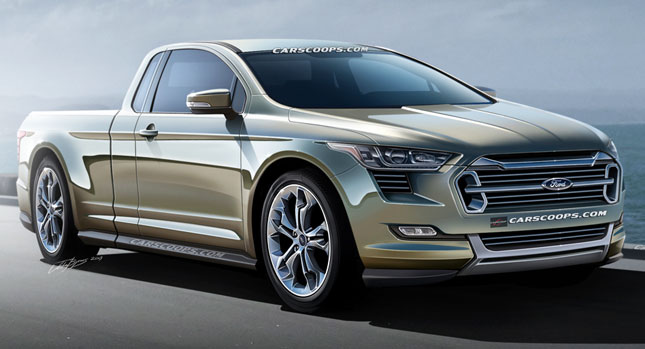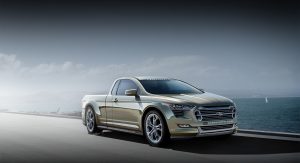Ever since the demise of the much loved Ford Ranger from U.S. soil, fans of the small pickup have been crying out for a replacement. Rather than taking on the Australian designed and developed ‘global’ T6 Ranger, the Dearborn-based manufacturer decided to pull out of the more compact pickup market altogether in its home market, leaving buyers little choice – go F-Series or go elsewhere.
This is all fine and dandy if you don’t mind the size of the bigger F-150, however for many that vehicle is far too big for their needs. Ford’s argument for not bringing in the global Ranger is that it’s too close in size to the F-Series – a point that I tend to agree with. Having climbed over, sat in and prodded the world Ranger in the flesh, it’s easy to see why Ford thinks it would cannibalize sales of its No.1 chart-topper.
So what chance does a small to compact truck have in returning to the blue-oval stables? Well, according to Ford’s truck marketing manager Doug Scott, there is potential for a Ranger replacement, but any successor coming to fruition would be far down the track. Which leads to an important question: what direction – if any, should a new compact Ford truck take?
Well to illustrate one potential option, I’m proposing a vehicle that would sit below the Ranger in terms of size, and be based off the C1 platform that underpins the Transit Connect, Focus and numerous other Ford offerings. Layout-wise, some will notice familiarities with the iconic Ford Ranchero from the 60’s and 70’s and the current FG Falcon Ute sold in Australia – the latter in particular with its cargo bed separated from the cabin.
As with many carmakers, design is considered a major selling point; therefore any new entrant must stand out from the crowd and Ford knows this. I’ll happily admit that inspiration for the render borrows heavily from the handsome Ford Atlas concept. However, for greater differentiation, a blend of 2nd generation ‘kinetic’ design language and bold ‘truck-like’ design elements have been used. There are shades of Fusion sedan with slim-line headlights, large trapezoidal grill and twin-ridged hood. Yet the chrome barred grill and interlocking nostrils borrow heavily from the F-Series.
Sheet-metal surfacing is very fluid, creating a dynamic design statement that fits in with Ford’s passenger car range. Utilitarian vehicles often don’t lend well to adventurous cabin layouts, hence why the roofline and DLO (daylight opening) have typical pickup-like proportions. However on this proposal, the windscreen has been swept back much as possible for aerodynamic slipperiness, and front quarter glass has been implemented for improved visibility around the base of the A-pillars and side mirrors.
Interior-wise, the layout should be as functional as possible – with flexible seating in the form of normal or optional bench seats. Ergonomics should be a priority with a revised MyFord Touch that now includes more push-buttons and knobs for an increased intuitive feel. Cabin styling and materials should at least be in-line with the Fusion, yet stand up to the rigors of hard working environments with more durable materials.
What engines should power it? As much we would love the Mustang’s 5.0L V8 to be used, more realistic options would either be the 1.6L, 2.0L EcoBoost four-cylinder engines, or for those covering those extra miles – a 3.2L 5-Cylinder Power Stroke diesel from the 2014 Transit. Channeling those ponies to the ground is done through the front wheels, using either a six-speed automatic or manual transmission. AWD – which is highly desired in off-road and wintery conditions, would be optional.
Segment competition? On U.S. soil, such a proposal would almost be in a niche of its own. Even midsize trucks from GM and Chrysler have disappeared in recent years – and apart from Toyota’s aging Tacoma (which is currently a segment sales leader), there is little else. Obviously, there may be some internal competition from the larger F-150, yet that vehicle and this illustrated alternative are poles apart for any potential cross-shoppers.
This is just one design proposal, however is it heading in the right direction or should Ford to traverse down another road when developing its next compact pickup? Let us know in the comments below and hopefully Ford will be taking note.
By Josh Byrnes
Photo Renderings Copyright: Carscoops / Josh Byrnes
PHOTO GALLERY








